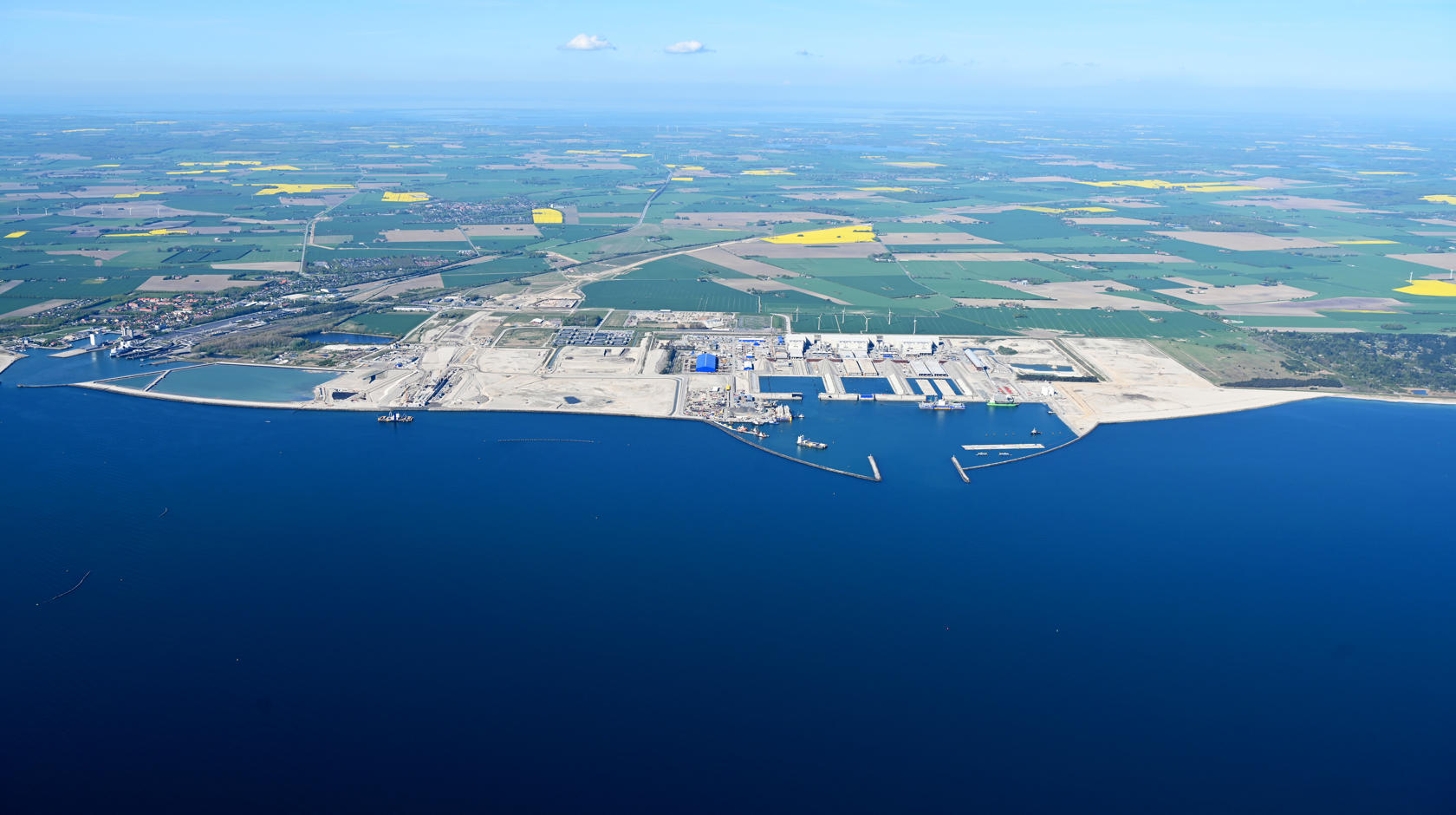Construction of the Fehmarnbelt tunnel began in 2020 on the Danish side, and in 2021 on the German side. You can find the overall schedule and the various phases of construction here.
Tunnel factory
The total area of the tunnel construction site is the equivalent of 300 football pitches and is the largest in Europe. It employs over 2,000 people from more than 40 countries.
The tunnel factory consists of three production halls – A, B and the smaller C, with a total of five production lines for the standard elements.
The Fehmarnbelt tunnel is built from 79 tunnel elements, each 217 metres long. Each standard element comprises nine segments that are cast in an assembly line production. Once a segment is cast, it is pushed forwards for curing and the moulds are prepared for the next segment until all nine segments are ready. On a sixth line, 10 smaller special elements with a basement housing the tunnel's electrical installations are bulit.
There is still some final work to be done before the individual elements can be moved to their final destination and immersed into place in the tunnel trench. Firstly, we need to ensure that each element meets our stringent quality requirements to give the tunnel the required 120-year lifespan.
Concrete is a living material that develops minor cracks during curing. This is inevitable when dealing with such large elements. To minimise cracking as much as possible, production takes place in production halls that are climate-controlled to maintain a constant temperature.
Any cracks that do occur are carefully inspected together with the contractor and repairs are agreed upon.
Once these works have been completed on each element, it is equipped with large ballast tanks in the railway tubes to ensure that the element is stable in the water. The roadway section is heavier than the railway, and the ballast must compensate for this so that the element can be immersed with an accuracy of a few millimetres. Other preparatory work is also carried out on the element.
Finally, the element is transported to the work harbour and additional ballast concrete is added so that the element no longer floats by itself. Now it will be kept afloat by the immersion pontoons.
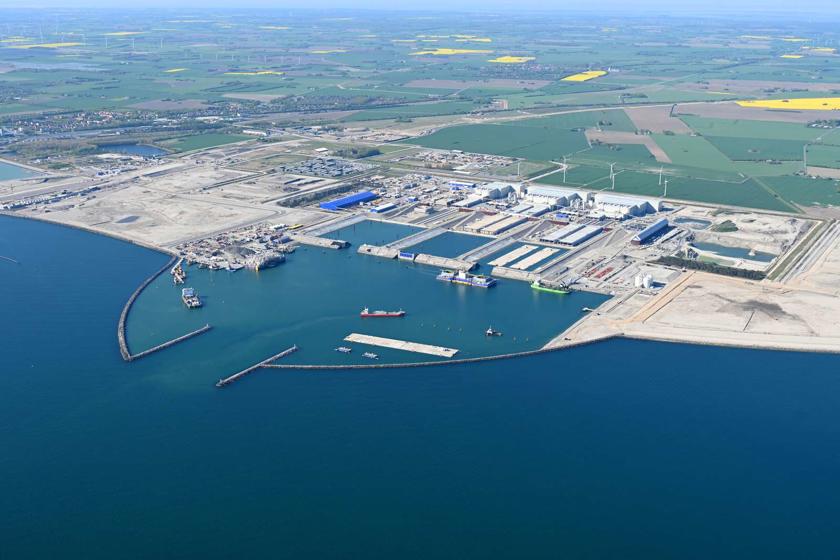
Panel Factory for steel processing
The Panel Factory is located southwest of the factory itself. This is where the many thousands of tonnes of rebar that arrive at the work harbour are assembled into large grid structures that form the skeleton of the tunnel elements. They are then transported to the tunnel factory where they are assembled prior to casting.
Most of the production of the lattice structures is performed with help of several welding robots. The finer work is carried out manually by welders.
Panel Factory covers around 25,000 m2 of the construction site and employs around 100 employees.
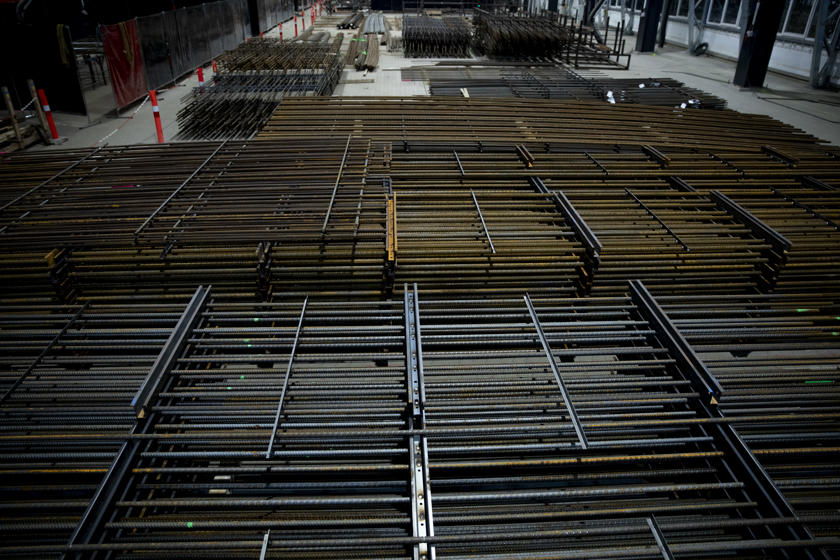
Work harbours
Blue Water Harbor Management is responsible for the operation of the two work harbours on the German and Danish side of the Fehmarnbelt. A cargo vessel arrives approximately every third day in Denmark, and approx. two vessels every week in Germany. Almost all materials needed at the construction sites are shipped directly to the construction site, which simplifies logistics and saves the transport of freight across land by many thousands of HGVs.
When the tunnel element production is at its peak, the work harbour in Rødbyhavn will receive around 65,000 tonnes of stone, cement, sand, gravel and steel every week.
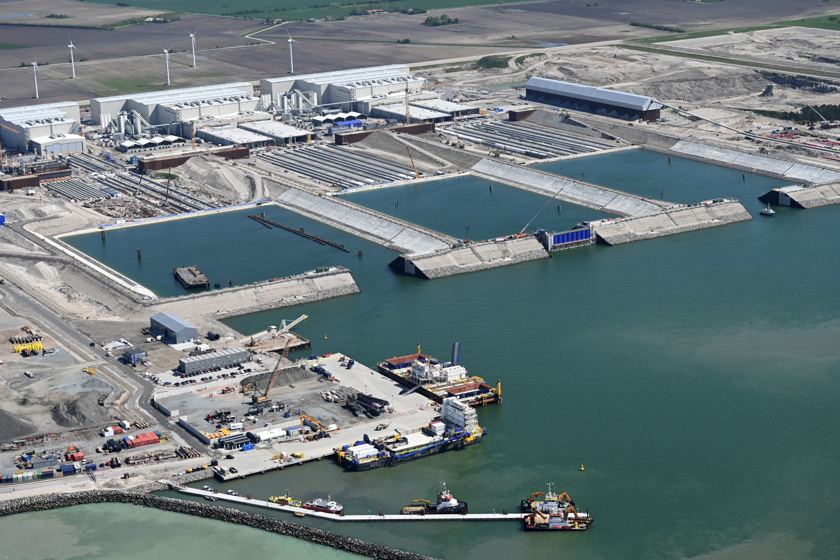
Tunnel portals
A tunnel portal, which connects the motorway and the railway on land with the immersed tunnel, is being built on both sides of the Fehmarnbelt.
On both the Danish and German sides, the first part of the tunnel on land has now been completed, with the end facing the Fehmarnbelt now covered with water. This is where the first tunnel element will be connected.
On the Danish side, the construction of the tunnel portal is near completion. Now the tunnel sections built on land are being covered wih soil. While the final earthworks are being completed a 800-metre-long ramp that will guide trains into the tunnel is being constructed.

Work in the Fehmarnbelt
Work at sea began in June 2020. Some 2 million tonnes of Norwegian granite were used for the creation of the new coastline while dredging and reclamation was performed by up to 60 vessels.
The dredging of the tunnel trench, which was completed in 2024, resulted in almost 15 million m3 soil, stone and sand, which will be reused for around 300 hectares of new nature and recreational areas at Rødbyhavn .
Customised dredgers such as the Hopper Dredger, Vox Amalia, the Wire Grab Dredger Manta and Magnor, the world’s largest Backhoe Dredger, were used for the operation.
The contractor is now using a number of purpose-built vessels for the immersion of the tunnel elements in the tunnel trench. These vessels are in the process of testing the equipment prior to the first immersion.
The special vessels are:
- Multi-Purpose Pontoon, Maya, which will lay out an even gravel bed upon which the tunnel elements will be placed.
- Immersion Pontoons Ivy 1 & Ivy 2, which have been specifically designed to support the tunnel elements during their journey from the work harbour to the tunnel trench. They will also immerse the elements into the tunnel trench.
- Spreader Pontoon, NP460, which will put stones and gravel along the sides of the tunnel element to lock it into position.
- Protection Layer Pontoon, Wismar, which will lay out a protective layer of stone on top of the element.
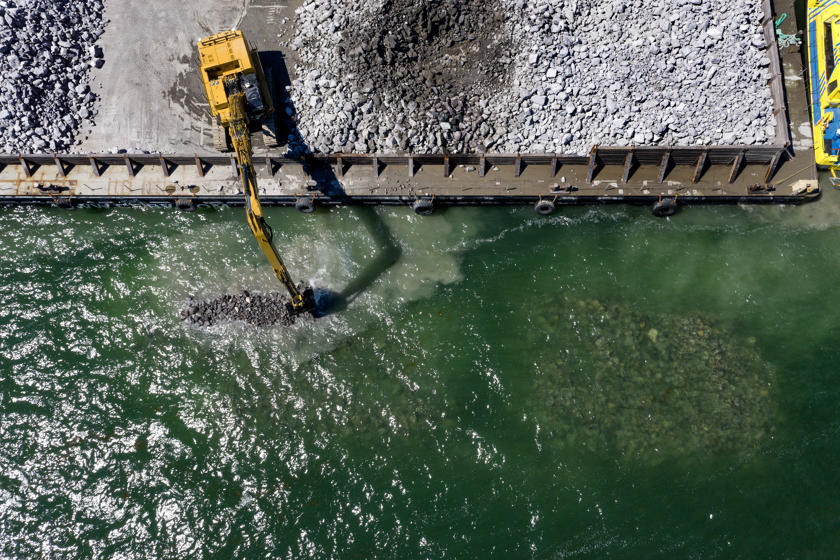
The construction site at Puttgarden
The German construction site is significantly smaller than the site in Denmark, but still forms a crucial part of the project area. The work is carried out at planned staggered intervals in relation to the work being carried out at the Danish construction site.
The German portal consists of two parts: a 450-metre-long section, which is being built as a cut & cover tunnel and an approximately 150-metre-long light transition zone, which provides for a smooth transition to the motorway and railway on land.
Further inland, two of three new bridges for the new alignment leading towards the tunnel entrance are completed. Preparatory work for the construction of the third bridge is underway.

